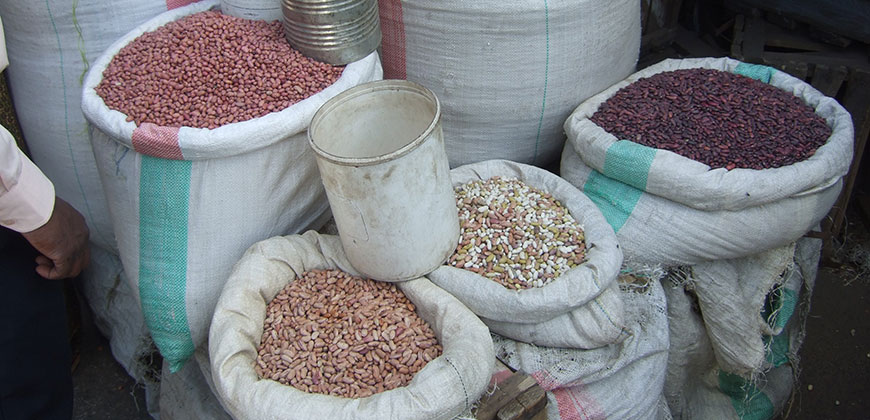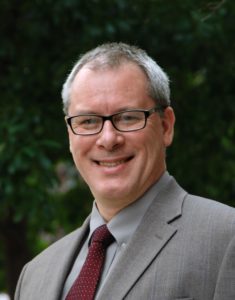
About 20 plant species make up 90 percent of the food crops that feed the world population. Twenty species for 7.4 billion people. Could that food supply be more stable, diverse, and nutritious? Most certainly, says Michael Grusak, a plant physiologist at the U.S. Department of Agriculture and a professor of pediatric nutrition at Baylor College of Medicine. Grusak will visit Colorado State University to deliver the annual, free Thornton-Massa lecture at the Lory Student Center Theater, Nov. 13, 3:30-5 p.m.

Grusak is perhaps best known for his work in helping to develop “golden rice,” a grain that was genetically engineered to contain beta-carotene. This genetic tweak provides the consumer with an important building block to make vitamin A, deficiency of which is estimated to affect millions of children around the globe – and lead to hundreds of thousands of otherwise preventable deaths.
And he hasn’t stopped there. Grusak’s work has continued in the intersection of plant physiology, genetics and human nutrition, such as with the Feed the Future Grain Legume Project, focusing on pulse crops. He is involved in studies the globe over, examining the nutrient profile of crops – both common and exotic – and how they might be improved.
“The origins and diversity of our food should not be taken for granted,” said Mike Antolin, chair of the CSU Department of Biology. “Mike Grusak has been expanding this knowledge over his entire scientific career. He works to bring that natural diversity to our tables – much to our benefit.”
Feeding the world
Grusak’s Nov. 13 lecture, “Feeding the World with Healthful Food Crops,” will explore the front lines of innovation in improving the globe’s food supply – and the coming challenges. “The health and well-being of humans depends on a safe, nutritious and adequate food supply, with many of these foods coming from crop plants,” Grusak has said. “Unfortunately, nutritional deficiencies abound in certain population groups due to food insecurity or to the inadequate nutritional composition of staple foods.”
To meet these big challenges, Grusak and his colleagues seek to better understand how plants transport minerals from the soil and throughout tissues. That, in turn, can lead to increased availability of essential nutrients in key crops, as well as the adoption of less common plant species by farmers – whether on the other side of the globe or at your local farmer’s market.
“Nothing comes closer to home than food crops, even if we don’t notice them every day,” Antolin said. “But food crops are hardly left to chance. Plant scientists like Mike Gusak network across the globe to develop locally adapted and nutritious varieties for our markets and for the world’s food-poor.”
Grusak received his Ph.D. in botany from the University of California, Davis. He was a NATO postdoctoral fellow and has been named a fellow of the American Association for the Advancement of Science. He developed a dedicated interdisciplinary program at the USDA’s Agricultural Research Service’s Children’s Nutrition Research Center.
Nov. 14 technical lecture
On Monday, Nov. 14 at 4 p.m., Grusak will also deliver a technical lecture. This talk, “Using Modern Agriculture to Improve Human Nutrition in the Developing World: Trials and Tribulations with Cassava – an Important Staple Root Crop” will be in the Greyrock Room in the Lory Student Center.
Thornton-Massa lecture
This will be the 17th annual Thornton-Massa lecture, a series that honors the late Dr. Emil Massa and the late Bruce and Mildred Thornton, who all shared a passion for biodiversity, plant genetics, agriculture, and horticulture. These interests inspired their respective families to create an endowed public lecture series CSU, hosted jointly by the College of Agricultural Sciences and the College of Natural Sciences.
Massa was a Denver-based physician who also had a keen interest in plants. His study of plant genetics, biodiversity, and breeding led him to become involved in supporting the Denver Botanic Garden, the People Park program and this lecture series.
Bruce and Mildred Thornton both worked at the Colorado State Seed Laboratory. Mildred received her undergraduate degree from, as it was then known, Colorado State College, before getting her master’s in botany. She then went to work at the Federal Seed Laboratory in Washington, D.C. Bruce was a member of Colorado State College’s faculty and on staff of the Agricultural Experiment Station. Bruce and Mildred married in 1930, and 10 years later, Bruce became head of the Colorado State Seed Laboratory. When he retired in 1961, Mildred took over as director of the laboratory.
For more information about this year’s lecture or the series, visit http://thorntonmassa.colostate.edu